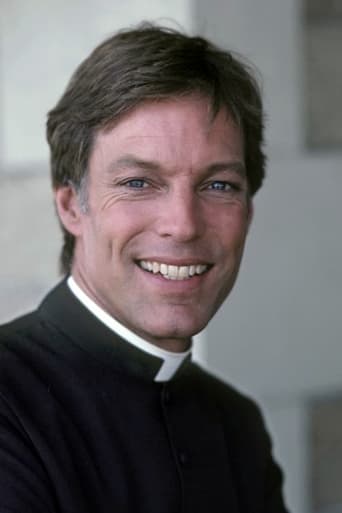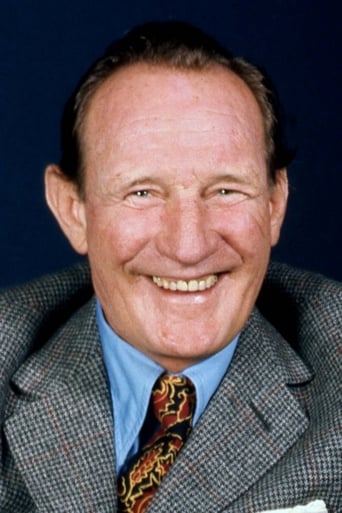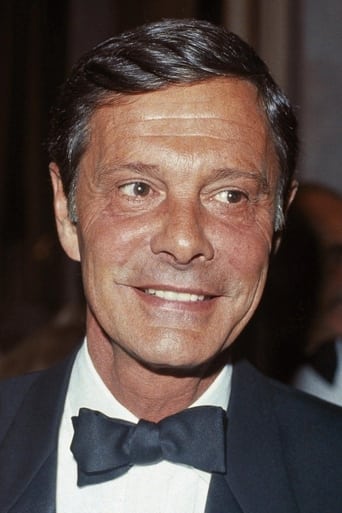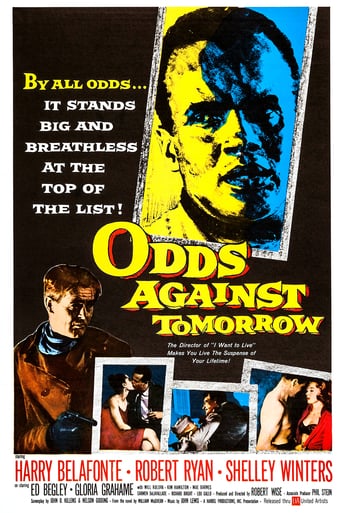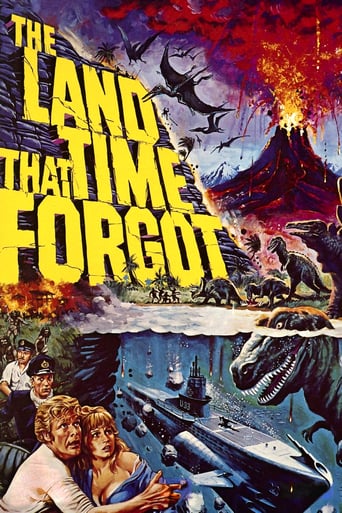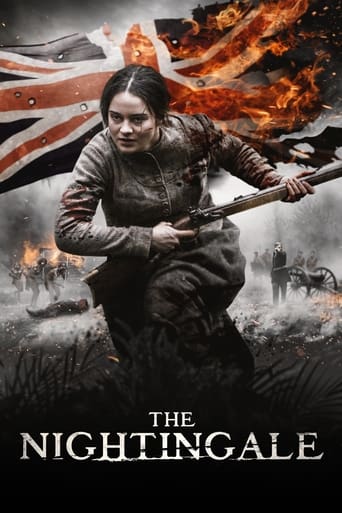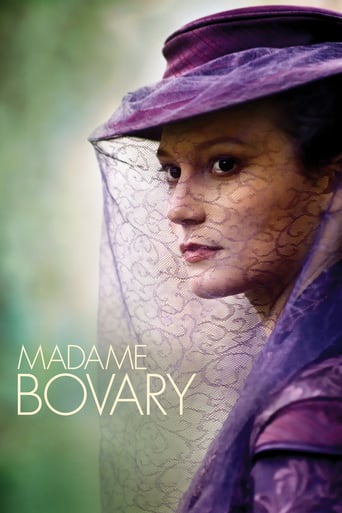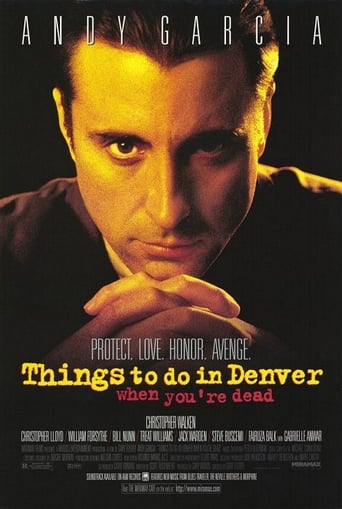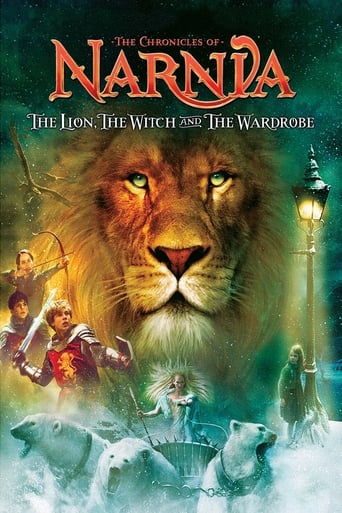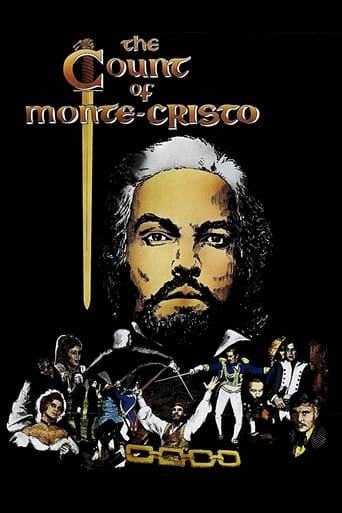

The Count of Monte-Cristo (1975)
A TV adaptation of the classic Alexandre Dumas novel. Edmond Dantes is falsely accused by those jealous of his good fortune, and is sentenced to spend the rest of his life in the notorious island prison, Chateau d'If. While imprisoned, he meets the Abbe Faria, a fellow prisoner whom everyone believes to be mad. The Abbe tells Edmond of a fantastic treasure hidden away on a tiny island, that only he knows the location of. After many years in prison, the old Abbe dies, and Edmond escapes disguised as the dead body. Now free, Edmond must find the treasure the Abbe told him of, so he can use the new-found wealth to exact revenge on those who have wronged him.
Watch Trailer
Cast


Similar titles
Reviews
I like the literature of Dumas and I like his novels and Monte Cristo is certainly one of his epic works and one of the best works in the history of literature. The best version I have seen on film is a French language work done in 1954 that is done in two parts that tells the story of the novel scrupulously on film. The other films I have seen based on the novel are shallow and squashed by omission such as the one done in 2002. This one done as a TV film is good to watch as an introduction and summary of the novel that captures the 1800s period it is set in but obviously not with the intention of being an epic which would take about 150 minutes to make. The problem I have with it is that in some respects it is over simplified that misses simple but important details that do not tell it properly and that would not of prolonged the film. For example we do not see Dantes persuade the smugglers to leave him on the island of Monte Cristo alone to find the treasure or how he alone gets it off the island to singularly become the Count expressing his astute character development and his determination. Chamberlain in my view is poorly cast and does a wooden and aged performance of the lead character who in the novel is more youthful in appearance. The other characters were well cast in this production such as Tony Curtis. The other misplayed character is Haydee who is represented and shown as a Cliché and Stereotype. In this version her appearance is Arabic which is to do with stereotyping and misrepresenting the diverse Ottoman Empire to the audience. Her description in the novel is the complete opposite as regionally she is from the Balkans not the Middle East. She is fair in physical looks and is a Greek princess whose father was an Ottoman viceroy the historical Albanian ruler of Greece Ali Pasha at the time of Napoleon. Dumas's description of her looks and royal dress is quintessentially Grecian not Arabic. In summary it is a good film to watch if you do not know the story or an introduction to get interested in it. But after watching this read the original book with a wider understanding of its content and context.
The 1960's American television hospital drama called 'Dr Kildare' made then Hearthrob, Richard Chamberlain, such a household face and name that to my generation he became pretty well typecast. I, for one, never particularly liked him; there always seemed to be a lurking smugness in his expression.That said, he has proved himself to be a fairly enduring actor of considerable ability. He really came into his own as the sleazeball son-in-law in 'Towering Inferno'. That was how I always imagined him.This movie casts him differently. He is the Grudgemaster General of the title, Edmond Dantes. Imprisoned on bogus charges for years on end in a vile remote dungeon; life seems to have ended in living hell. Then, he befriends an ageing, highly-educated fellow prisoner who teaches him all manner of science, philosophy, and social grace during their confinement. He also grows to understand the wicked deception that has befallen him.However, his fellow prisoner has a secret. It's the map to an unimaginable hidden treasure which he tacitly bequeaths to his young protégé.The old man dies suddenly. And in doing so provides the younger Edmond with a fortuitous means of escape. After a little dalliance with some pirates, he locates the stockpile of wealth and embarks upon revenge.Four villains require his particular attention. Edmond rises from nowhere to be the most fashionable fellow with money to burn. He means to humiliate and destroy each of his enemies publicly rather than just kill them. That untold wealth enables him to investigate the minutiae of their lives and discover their greatest weaknesses.It's a grudge-bearers pipe-dream. We watch as each in turn is shamed, scandalised and overthrown. He lets no-one and nothing stand in his way. This is how vengeance should be done.Chamberlain gives a very creditable central performance. He demonstrates that, if anything, the media have under-valued him. He is Mr Ice. His piercing blue eyes positively sparkle with revenge. The familiar smirk assumes the likeness of an acid sneer. How well the movie follows Dumas' book I cannot say, never having read it. Yet I have seen a number of other interpretations on screen and still consider this the most pleasing and convincing.All of the principal actors give a good turn. And there are several notables such as Donald Pleasance, Louis Jourdan and Tony Curtis. All of them are still in their prime. The costumes are suitably flamboyant, set-pieces convincing, there is some imaginative location work. Other technical aspects seem nicely brought together. Although made for television this was certainly not done on the cheap.Perfect for the unforgiving of all ages, this movie is a well-presented period drama that deserves to be seen at the cinema instead of being confined to the prison of television. Check it out.
This is a made-for-television version of "Le Comte de Monte Cristo" which I believe qualifies as a masterwork. The feature was directed by David Greene and written by Sidney Carroll. Its basis is the famous adventure novel by Alexandre Duimas, the father. The feel of the piece is clean, to my eyes, the lighting very bright, the colors intense. I found it to be modern without committing in any sense a violation of its own century. Even those unable to understand something being of another age but not 'dated' can probably still enjoy what I regard as a very superior production of this classic story. The cinematography by Aldo Tinti I find to be memorable, as is the lyrical score by Allyn Ferguson. The attractive and varied settings within the production design done by Walter Patriarca as well as the art direction by Andrew Patriarca with Walter Patriarca are very much above-average even for theatrical-release films. Also, Olga Lehmann's costumes help to establish period and mood admirably in my judgment; the French period illustrated with its Empire dresses and fitted gentlemen's clothing photographed very nicely. The story is actually a fairly simple one. Edmond Dantes, a gifted and honest young seafarer has taken command of a ship belonging to his company and brought it home safely after the death of his captain. Betrayed by enemies he never knew he had, he is accused of the captain's death and taken away from the woman he loves, his life, his world and imprisoned for fourteen years. He at first fears he will go mad; then he is found by the Abbe Feria, who was tunneling to escape the island prison where he too has languished, but ended up in Dantes' cell instead. The two become fellow conspirators, and the learned cleric teaches Dantes all that he has missed in life as they work together to regain their freedom. He tells Dantes of a fabulous treasure on the Island of Monte Cristo, that they will be able to share someday. But he dies suddenly, after they have worked three years more; and Dantes barely escapes before the jailers come, with the map to the treasure and their tools. He returns to the cell where the Abbe's body has been sewn into a bag for disposal into the sea. Substituting himself after shifting the Abbe to his own cell, he waits. Thrown into the sea, he uses a knife to escape and survives the fall and near-drowning in good condition. It is his bad fortune to have to swim for hours before he can find so much as a floating log. Then they rescue him and take him in among them, for his knowledge of seamanship and more. He becomes a valued man, and learns that his father has starved to death during his absence. He vows revenge and seizes the means to it--the treasure of Monte Cristo. Recruiting loyal friends among the smugglers, he finds the five-centuries-old treasure. "The world is mine!" he cries. And with that, he becomes "The Count of Monte Cristo," one of the richest men in the world, a man who can have the revenge Edmond Dantes was denied by those whose business should have been justice. Four men are his target, the men who have profited from their evil deed against him. His sweetheart Mercedes has married one of the four and has a son; but even she fails to recognize him when he turns up as the darling of Paris, the most-sought-after man in French society. One by one, ensnaring them through their weakness and their lust for his unearned wealth, he causes them to be ruined or find death or a prison cell. He has become, in Mercedes' words, an 'avenging angel', no longer a man. But he is passionless about his pursuit of justice; it is for the viewer as if the innocent young Dantes were a man who had been done to death and as if he, the Count of Monte Cristo, were his separate champion exacting punishment for the man who is no more. But when he finishes, Mercedes does not see Edmond Dantes in him, only the vengeance seeker. This film is not about the power of wealth, but rather the wealth that power brings; for with cooperation, men ready to invest in one's schemes, men who can be bought or men who follow an opportunity, there is very little one cannot do. The flaw lies in a French society whose power-holders can be bribed and corrupted, not in the man who makes them offers they should refuse. I believe this to be far the best of the story's many versions. The cast is exceptional too for any film. Richard Chamberlain as the young Dantes, the prisoner, the smuggler, the avenger, the man is award caliber; he became "king of the TV mini-series" largely on the strength of this timeless performance. Among the men he seeks are Donald Pleasance, Tony Curtis and Louis Jourdan. As Mercedes, Kate Nelligan is lovely and suffers as well as she always does; her emotional range is admirably suited to the task of both losing Dantes and grieving over her threatened son, long after she has ceased to love her gamecock husband, Curtis. Trevor Howard is powerful and affecting as the Abbe Feria, lacking only enough lines to deserve awards for his work. Among the conspirators, Jourdan is coldly interesting, Pleasance admirably nefarious and Curtis, despite his accent problems, is energetic and intelligent. This is a film that I never miss, and I invite viewers to discover it. It is hard as a diamond, yet passionate, fast-paced and I suggest intensely-interesting at every point in its logical progression.
I went to see the new production of The Count of Monte Cristo this past weekend and then rewatched the one with Richard Chamberlain. This one captured the book far better than the new one did. It follows Dumas' original more closely and the character of the Count is calculating and single-minded just as in the book. The supporting actors weren't bad but Richard Chamberlain is who makes this movie as enjoyable as it was.


